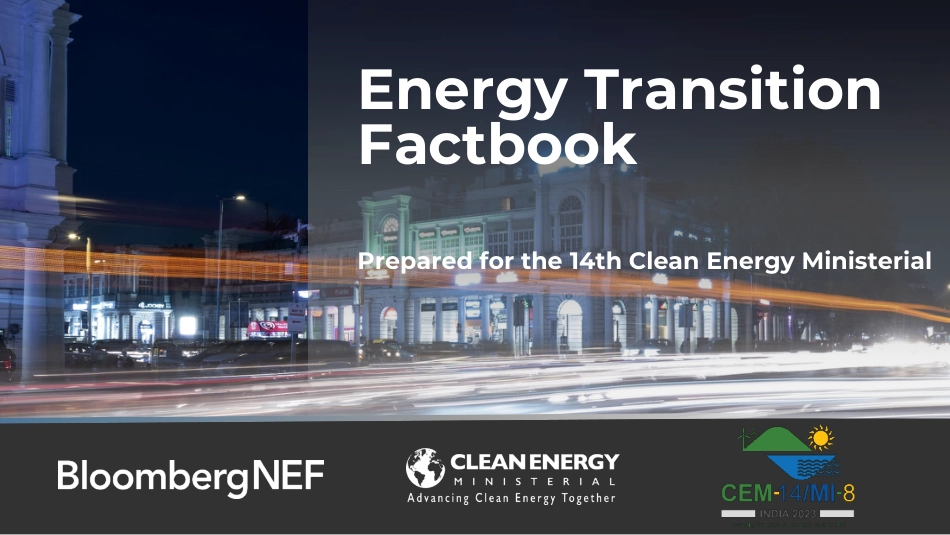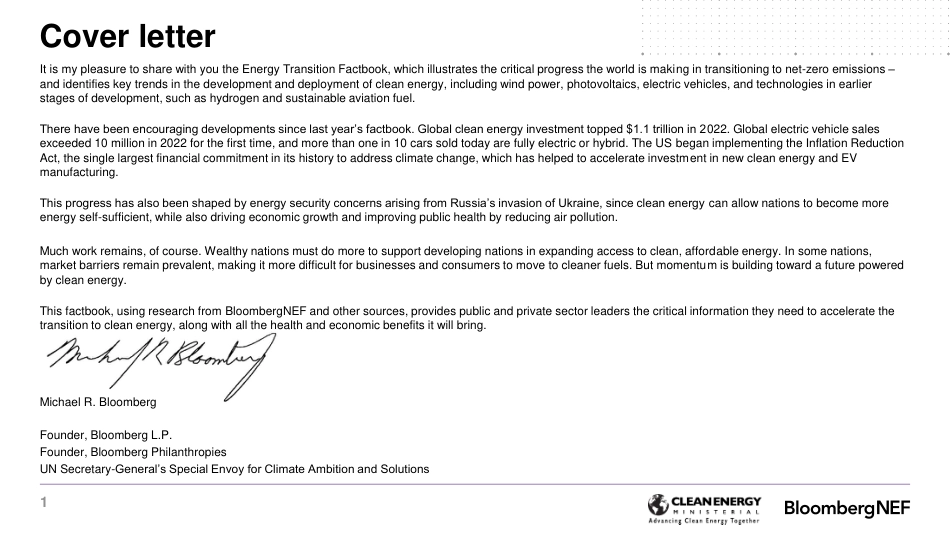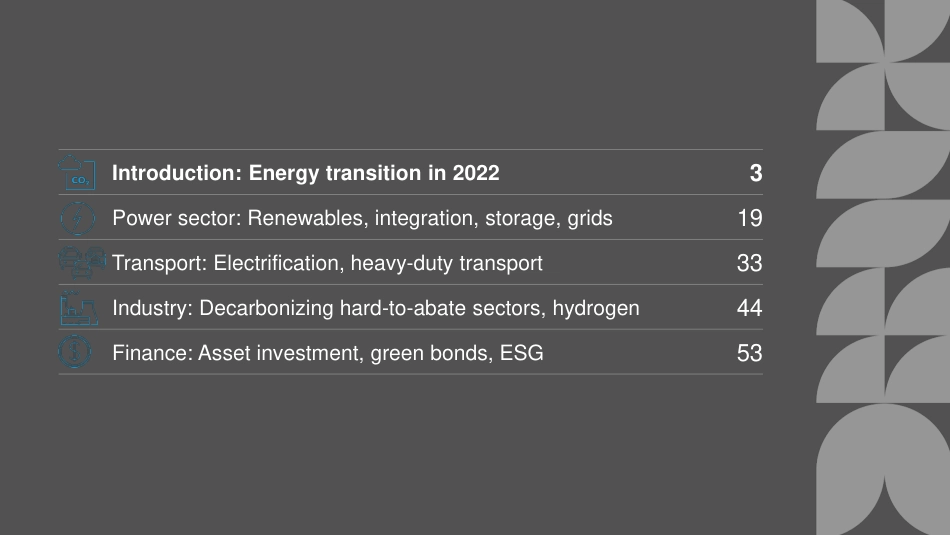Energy Transition FactbookPrepared for the 14th Clean Energy Ministerial1It is my pleasure to share with you the Energy Transition Factbook, which illustrates the critical progress the world is making in transitioning to net-zero emissions –and identifies key trends in the development and deployment of clean energy, including wind power, photovoltaics, electric vehicles, and technologies in earlierstages of development, such as hydrogen and sustainable aviation fuel. There have been encouraging developments since last year’s factbook. Global clean energy investment topped $1.1 trillion in 2022. Global electric vehicle sales exceeded 10 million in 2022 for the first time, and more than one in 10 cars sold today are fully electric or hybrid. The US began implementing the Inflation Reduction Act, the single largest financial commitment in its history to address climate change, which has helped to accelerate investment in new clean energy and EV manufacturing.This progress has also been shaped by energy security concerns arising from Russia’s invasion of Ukraine, since clean energy can allow nations to become more energy self-sufficient, while also driving economic growth and improving public health by reducing air pollution.Much work remains, of course. Wealthy nations must do more to support developing nations in expanding access to clean, affordable energy. In some nations, market barriers remain prevalent, making it more difficult for businesses and consumers to move to cleaner fuels. But momentum is building toward a future powered by clean energy.This factbook, using research from BloombergNEF and other sources, provides public and private sector leaders the critical information they need to accelerate the t...



